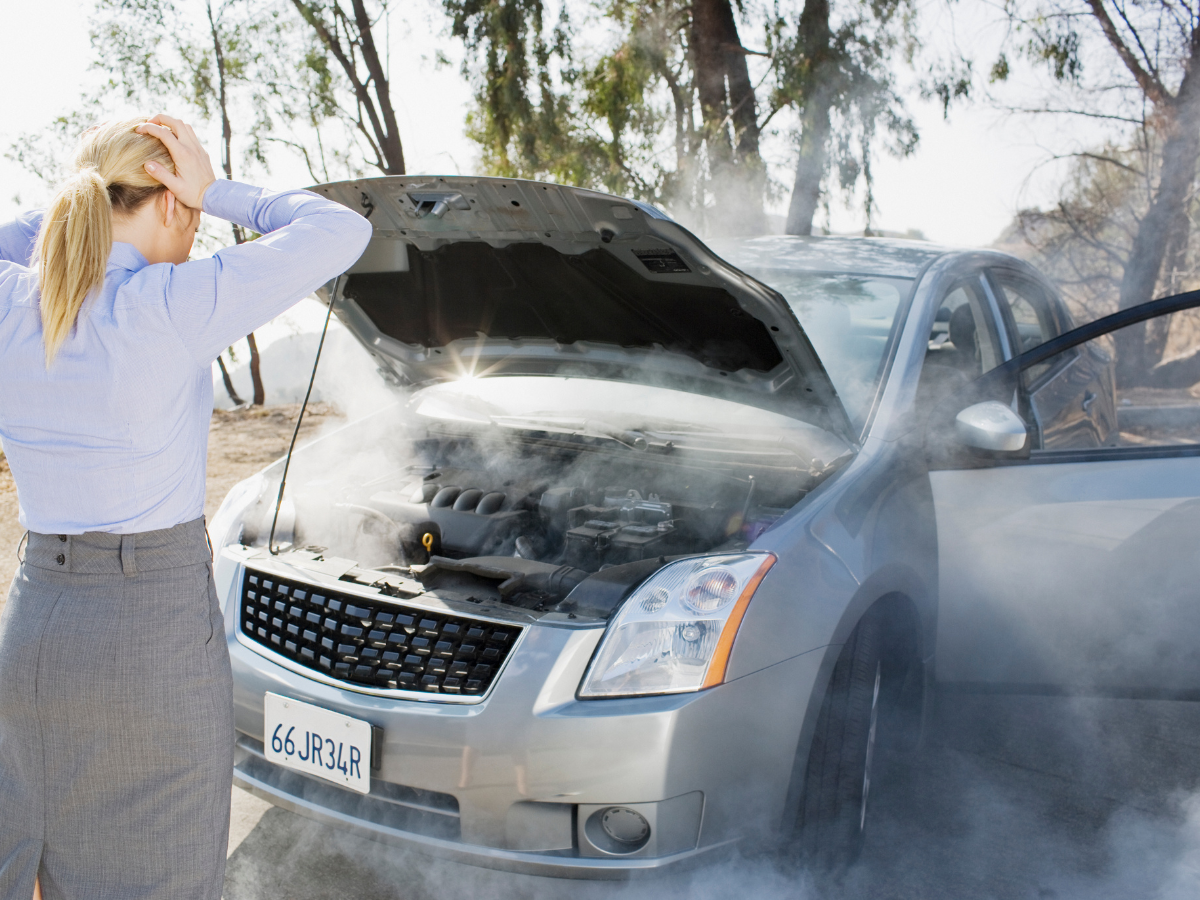A seized engine is the ultimate nightmare of every car owner. In a split second, you start wondering whether it pays to fix your engine or whether selling as-is will be the better option. Follow this complete guide from CarBrain to understand what a seized engine is, how to check for symptoms and their causes, possible repairing ways, and whether it is economically viable to get your car fixed or to sell your car directly.
What is a Seized Engine?
A seized engine is one in which the internal parts have seized up and cannot operate freely anymore, usually due to some sort of mechanical failure that could be related to oil starvation. When an engine runs out of oil or if oil is unable to circulate, friction between metal parts starts to build up, causing extreme heat, and as such, the parts start grinding against each other. In the worst cases, they can even melt together.
The common reasons for seizing of an engine include:
- Insufficient lubrication because of worn-out or dirty oil
- Failure of the engine's oil pump
- Severe over-heating;
- Hydrolocking- water enters the combustion chamber
- Mechanical failure of certain parts
Symptoms of Seized Engine
A seized engine is bound to show a few distinct symptoms which separate it from all other issues in the car, like a dead battery. Knowing these symptoms will help you recognize it as soon as possible.
- Loud Knocking Noises: The car might make a loud "crank" noise because of insufficient lubrication.
- Fumes or Smoke: When the engine can't turn over, fumes or even smoke can escape from the engine bay.
- Exposed Piston: Severe cases could see loose components lodge into other parts of the engine to show the piston.
- No Response: If your engine is seized, your car won't start but other electrical components like lights may still work.
Can a Seized Engine Be Fixed?
It is possible to repair a seized engine depending on the extent of the damage. Seizing from minor issues such as a small component that was stuck can be fixed rather quickly. However, if the damage is serious in terms of mechanical failure, you could have to replace or rebuild the engine, and repairs are often over $3,000.
When to Repair a Seized Engine
Light seizure: This may be because of rust or slight mechanical failure. The problem can be solved by pulling out the spark plugs and lubricating the cylinders with oil.
Catastrophic damage: If the failure is because of friction between metals or if its internal parts are damaged, then a complete rebuild of the engine is required or may require replacement in which case, the cost of repair will become impossibly high.
Our expert evaluators can help you get an accurate estimate for your cars value, FAST!

Types of Engine Seizure
Hydro-Locked Engine
A hydrolocked engine is one in which water enters the combustion chamber and prevents the piston from making its full stroke. This mostly occurs when one drives through deep water or floodwaters. At low RPMs, damage might be minimal; however, if the RPMs are high, one can almost surely expect bent rods and damaged pistons.
Vapor Locked Engine
Vapor lock is a condition wherein fuel vaporizes prior to reaching the engine. This typically happens with most older vehicles that have low-pressure fuel systems. Vapor lock prevents an engine from starting properly and is often encountered during hot weather.
Causes of a Seized Engine
The following are the common causes:
- Insufficient Oil Change: Lack of regularly changing your oil may result in your engine running out of oil or simply running on dirty oil, thus causing lubrication failure.
- Incorrect Oil Pump: A malfunctioning oil pump does not enable the flow of oil, thus, resulting in internal friction.
- Overheating: Extreme heat can distort the engine components.
- Hydro locking: Entry of water hampers the proper combustion process.
- Mechanical failure: Due to a damaged or worn-out part the result may be the locking of the engine.
Cost of Repair for a Seized Engine
Repair cost for a seized engine depends upon the scale of damages:
- Vapor Lock: If the system cools down and starts working again it would cost nothing, or it will costs the expense of replacing a fuel pump if needed, that ranges from $ 500-$1,500.
- Hydrolocked Engine: From new spark plugs to a complete replacement of the engine, depending on the extent of the damage.
- Complete Seizure: Most often, this is over $3,000 to repair or replace a completely seized engine.
Here's a chart listing some makes and models that have been known to experience frequent seized engines due to various issues like oil starvation, timing chain problems, or general engine failure based on historical data and common reports:
|
Make |
Model |
Model Years Affected |
Common Causes of Seized Engines |
|
Hyundai |
Elantra |
2012-2016 |
Engine oil consumption, timing chain failure |
|
Hyundai |
Sonata |
2011-2015 |
Oil starvation, piston ring wear |
|
Kia |
Optima |
2011-2015 |
Excessive oil consumption, engine bearing wear |
|
Kia |
Sorento |
2012-2015 |
Oil pump failure, engine knocking |
|
Chevrolet |
Equinox |
2010-2013 |
Oil consumption issues, timing chain problems |
|
Ford |
Focus |
2012-2016 |
Overheating, cylinder head cracking |
|
Nissan |
Altima |
2002-2006 |
Timing chain issues, lack of lubrication |
|
BMW |
3 Series |
2007-2010 |
High engine heat, carbon buildup |
|
Chrysler |
PT Cruiser |
2001-2010 |
Cooling system failure, overheating |
|
Toyota |
Camry |
2007-2011 |
Oil sludge buildup |
|
Subaru |
WRX/STI |
2008-2014 |
Oil starvation, high engine stress |
|
Dodge |
Caravan |
2011-2014 |
Oil leaks, timing chain issues |
|
Mazda |
RX-8 |
2004-2011 |
Rotary engine issues, carbon deposits |
|
Volkswagen |
Jetta |
2010-2015 |
Timing chain tensioner failure, low oil pressure |
The data in the chart about common makes and models that seize engines is a compilation of publicly available information and reports from automotive experts, repair forums, recalls, customer complaint databases like the National Highway Traffic Safety Administration (NHTSA) and sites like Consumer Reports, CarComplaints and Edmunds.
Repair or Sell a Car With a Seized Engine?
In most scenarios, it's simply not worth fixing a seized engine. You can sell your vehicle 'as-is' for a lot less headache. Consider the following:
- Repair Costs: Comparatively relate the costs incurred for repair with the value of the car as a whole.
- Condition of the Vehicle: Is it a clunker with other car problems, such that spending money on repairs would not be prudent?
- Selling Difficulty: You may find selling a car with a seized engine problematic. However, with companies like CarBrain, that is not something you have to be concerned about.
CarBrain is a company that buys vehicles in any condition, with major mechanical faults such as seized engines, and offers instant quotes, free towing, and fast payment.
How to Check for a Seized Engine
If your car doesn't start and you feel that it can have a seized engine, you can try doing the following:
- Battery function: In case your lights and electronics work but the starter can't turn the engine on, then maybe your engine is seized.
- Turning the engine: Take a breaker bar to the crankshaft pulley. If that doesn't turn, then your engine could be seized.
What to Do When Your Engine Locks Up
In this case, if this happens while traveling, immediately put the transmission in neutral and coast safely to the side of the road. If an engine has seized, do not continue to try to restart It you will just be causing further damage.
Ready for Your Options? CarBrain can get you a fast, no-obligation quote for your car with its seized engine today. Enjoy free towing and fast payment, and make it easy on yourself!




